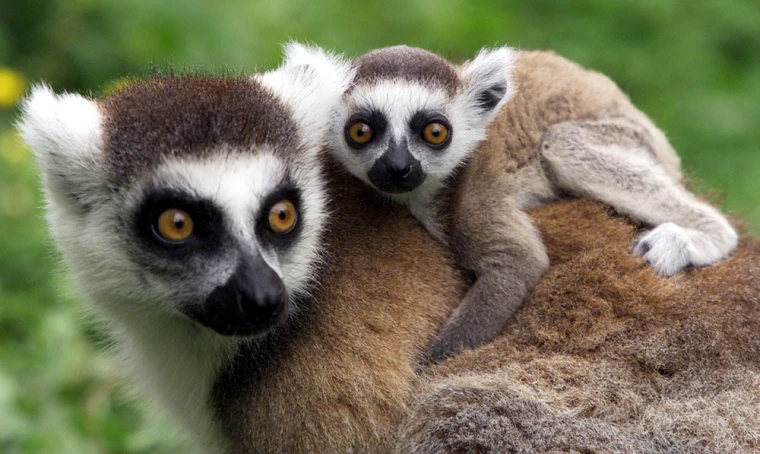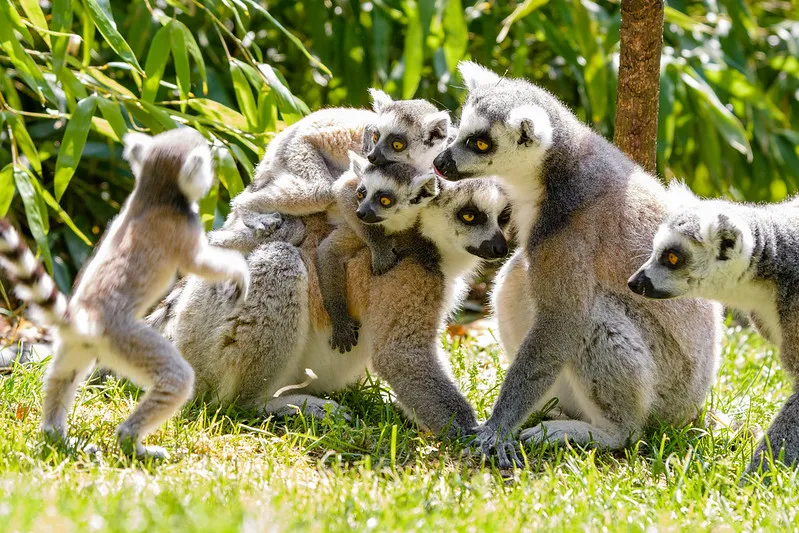
The Amazing Manchester Legacy: The Rich History of Label Printing
January 3, 2024
The Value of Investing More in Brand Labels: How Higher Spending Can Drive Increased Sales
January 3, 2024
Harmony in the Trees: Understanding How Lemurs Work Together
The lush, vibrant forests of Madagascar are home to some of the most intriguing and charismatic creatures on our planet: lemurs. These captivating primates not only exhibit fascinating behaviors but also showcase remarkable teamwork and cooperation within their social groups. Let’s delve into the world of lemurs and explore how these unique animals work together for survival and success.
Lemurs, characterized by their distinctive wide-eyed gaze and bushy tails, are incredibly social animals. They form complex and tightly knit social structures within their groups, known as troops or bands. Within these troops, various species of lemurs showcase different social dynamics, but one common thread among them all is their reliance on cooperation for survival.
One of the key aspects of lemur society is their communication. Lemurs employ a range of vocalizations, body language, and scent marking to communicate and maintain social bonds. These forms of communication are crucial in coordinating group activities and maintaining cohesion within the troop.
Within a troop, you’ll find a hierarchical structure, often led by a dominant female. However, this hierarchy doesn’t mean competition or discord; rather, it serves to maintain order and reduce conflict within the group. Each member plays a distinct role, contributing to the overall well-being of the troop.
Foraging is a prime example of how lemurs work together efficiently. They often engage in cooperative foraging, where individuals within the troop collaborate to find food sources. Some lemurs have specialized diets, and by working together, they increase their chances of finding various food types. For instance, while one lemur may be adept at spotting fruits, another might excel at locating insects or leaves. By sharing these discoveries, the troop ensures a diverse and plentiful food supply for all.
Predator avoidance is another area where their teamwork shines. When faced with a threat, lemurs emit alarm calls to alert others in the troop. This swift communication helps in organizing a collective response, often involving group evasion or mobbing the predator to drive it away.
Furthermore, grooming rituals among lemurs serve not only to maintain hygiene but also to strengthen social bonds. Grooming sessions provide opportunities for social interaction, trust-building, and reinforcing relationships within the troop.
However, it’s essential to note that lemurs face numerous threats to their habitats, including deforestation, habitat fragmentation, and illegal wildlife trade. These challenges endanger their ability to thrive and maintain their intricate social structures.
Studying the cooperative behaviors of lemurs offers valuable insights into the evolution of sociality among primates. Their ability to work together exemplifies the significance of cooperation in ensuring survival in challenging environments.
In conclusion, lemurs showcase remarkable teamwork and cooperation within their social groups. Their intricate social structures, communication methods, cooperative foraging, and collective defense mechanisms highlight the importance of collaboration for the survival and well-being of these captivating creatures.
As we continue to learn more about lemurs and their social behaviors, it becomes increasingly clear that their harmonious interactions provide not just a window into their world but also valuable lessons about the power of working together for the greater good. Let’s celebrate and protect these fascinating animals, cherishing the beauty of their cooperative spirits in the enchanting forests they call home.




